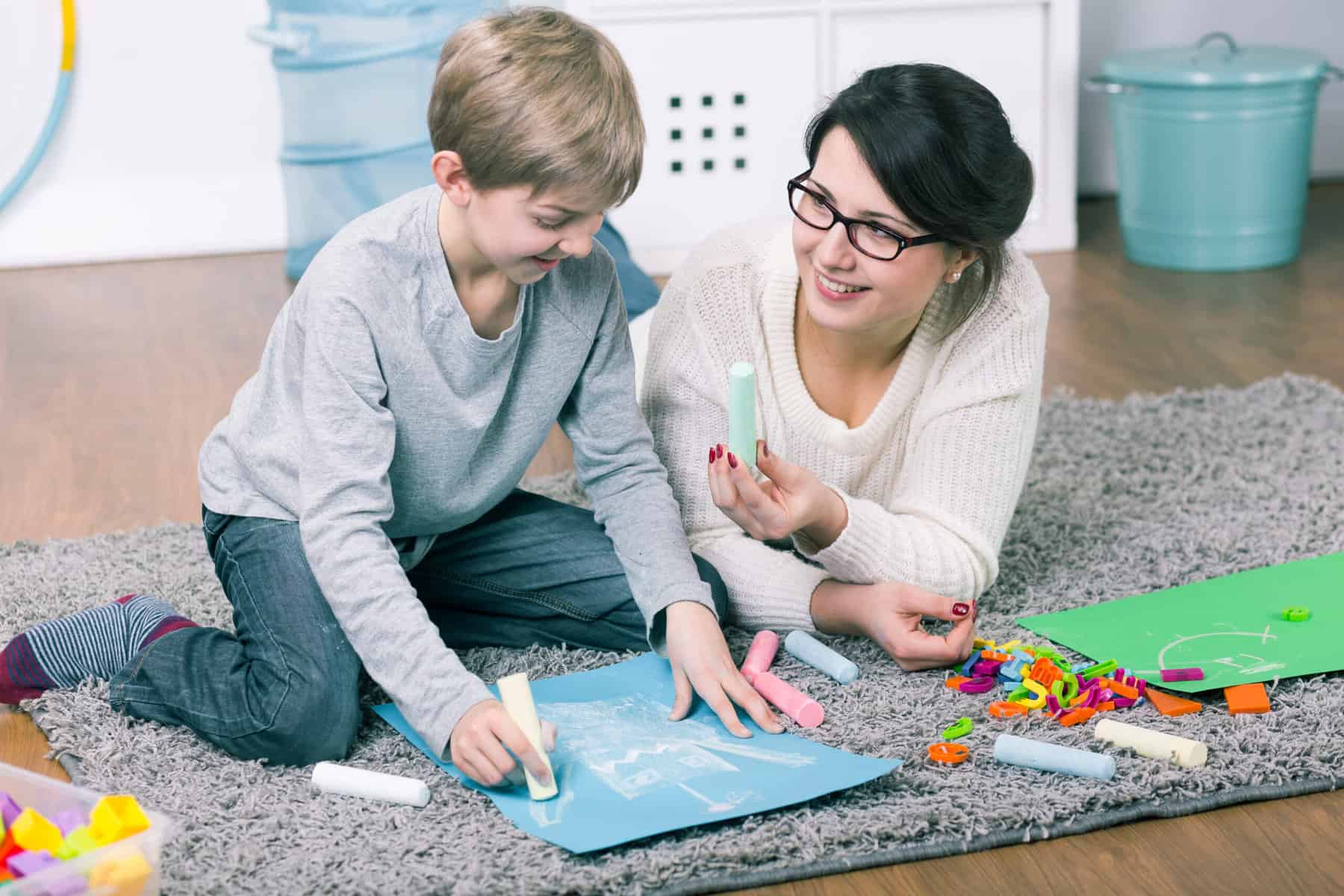The Eclectic Homeschool Style
Many parents are realizing that teaching a classroom full of children, all with different learning needs, the same material in the same way may not be the most optimal approach to education. It’s no wonder why homeschooling rates are on the rise! If you’re beginning your homeschool journey, you may have come across the phrase “eclectic homeschooling.”
This highly individualized approach allows you to perfectly tailor your child’s curriculum, taking into account their strengths, preferences, and interests! Perfect for families seeking flexibility, the eclectic homeschool approach gives you the best of all worlds.
What Is Eclectic Homeschooling?
Eclectic homeschooling is an approach to homeschool that involves, according to Merriam-Webster, “selecting what appears to be best in various doctrines, methods, or styles.” There is no such thing as one-size-fits-all learning, and eclectic homeschooling allows you to meet your child where they’re at!
The phrase “eclectic homeschooling” is sometimes used interchangeably with “relaxed homeschooling.” Relaxed homeschoolers typically choose one of the homeschooling styles and tweak it to meet their family’s needs, whereas with eclectic homeschooling, you can borrow aspects from any combination of the homeschooling styles to create your own custom educational experience!
Many parents are accidental eclectic homeschoolers. Tailoring your child’s curriculum and schedule often happens organically during every family’s homeschool journey. Eclectic homeschooling is more of a philosophy than a defined style: It really just involves noticing what works and what doesn’t for your child and having a willingness to change it up when needed!
Eclectic Homeschooling Method
No two families who choose the eclectic approach to homeschooling will be exactly the same; in fact, they may just be polar opposites!
One of the main things you’ll want to keep in mind with this style of home education is to pay close attention to what’s working and what isn’t. While there is no right or wrong way to homeschool eclectically, there are a few steps you’ll want to take:
- Research your state’s homeschooling laws. Some states have more relaxed laws, while others have laws regarding instruction hours, required subjects, and/or any standardized testing requirements.
- Set goals. These can be academic, of course (e.g., scoring well on a standardized test, learning long division, etc.), but they can also be more personal (helping your child develop independence or confidence). These will lend structure to your child’s education and help as a guide when you’re deciding what should come next.
- Connect with other homeschooling families. A key element to an eclectic homeschooling approach is to incorporate whatever works for your child – and one of the best ways to get ideas is from veteran homeschoolers! There are many groups and co-ops available to get involved with, both virtually and locally. These connections can be invaluable, especially for first-time homeschoolers!
- Research curricula and other learning materials. There is a plethora of homeschooling resources available online, from all-inclusive curriculum programs, textbooks, lesson plans, and more. Keep in mind that you can always change course and try something new!
- Watch and learn! All you really need to be an eclectic homeschooling parent is the ability to observe your child, keep what works, and discard what doesn’t. Many parents (especially those transitioning from public or private school) find it helpful to start with the traditional method. From there, you can closely observe and see what keeps your child engaged and motivated, from the materials (e.g., textbooks vs. educational videos), lesson styles (e.g., hands-on experiments vs. assessments), to subject matter.

Styles of Homeschooling
Eclectic homeschool mixes and matches aspects of different homeschool styles. You can read more about these styles here.
There are roughly 8 different styles, and they are…
- Traditional Homeschooling: This approach closely mirrors public and private school, making use of traditional schedules (Monday-Friday, morning to afternoon), grading and assessments, and in-home classrooms.
- Montessori: Often called “child-led learning,” this style of homeschooling utilizes self-direction, hands-on learning, and collaborative play.
- Charlotte Mason: The Charlotte Mason approach uses “living” literature, poetry, music, and fine arts. This style may be best for children who enjoy reading and connecting with the natural world.
- Waldorf: This style focuses on the “whole child” and emphasizes experiences over academics. This approach discourages the use of computers and devices but is otherwise very flexible.
- Project-Based: As the name implies, children learn through projects, typically one at a time. This is a great method for children who have specific interests!
- Unschooling: Unschooling is often compared to eclectic, or “relaxed,” homeschooling in that the approach utilizes fluidity and tailoring a curriculum to a child’s specific needs. However, unschooling is usually completely child-led.
- Roadschooling: Calling all adventurers! This style of homeschooling complements lessons with trips to museums, historical sites, national parks, and more. This method is perfect for families who love to travel!
- Eclectic: A combination of some of the above!
Researching homeschool styles further can be helpful even if you don’t implement one specific style. For example, you may love the real-world experience of roadschooling but with the focus on literature of the Charlotte Mason method or the unit study activities of the project-based style. It’s completely up to you!

Is Eclectic Homeschool Right for My Family?
Wondering if this approach is right for your family? Here are some questions you may want to ask yourself first…
- How many children do you plan to homeschool? An eclectic homeschooling curriculum can work for families with any number of children, but if you are homeschooling more than one child, you may end up naturally taking this approach! This style allows you to efficiently teach children with differing interests, abilities, strengths, and weaknesses. If you’re interested in eclectic homeschooling, online curricula can be the perfect way to meet the needs of multiple grade levels at once.
- What are you looking to get out of homeschooling? There are so many reasons to choose home education – and if you’re looking for the ability to customize your child’s education, as well as a low-stress learning environment (for you and your child!), the eclectic homeschooling method might be the right choice.
- What are your child’s needs? This approach to homeschool can help children thrive academically, no matter their learning needs or goals. Eclectic homeschooling is not about keeping or getting your child where they “should be” – it’s about supporting them wherever they are in their learning journey.
Eclectic Homeschooling With Miacademy
Miacademy and MiaPrep can fit into any approach to home education – this is especially true for eclectic homeschooling! Miacademy’s flexibility makes it the best eclectic homeschool curriculum for grades K-8, while MiaPrep is perfect for students working in grades 9-12.
Our programs were created with flexibility in mind and are totally customizable. Our parent portal allows parents to assign different grade levels for different subjects, assign and unassign everything from entire courses to specific assignments, adjust both school term and school days, and schedule breaks in advance. Once you’ve assigned the coursework and set the schedule, your child is ready to log on and start learning!
Mia students typically work from their homepage’s Learning Path. The Learning Path displays all assigned lessons each day and updates as each lesson is completed, allowing your child to work independently. If they need a refresher, they can always access past lessons from the “All Lessons” tab of their account!
All assigned coursework will evenly spread over the school term and days you’ve selected – plus, any missed work will be re-assigned, and the program will automatically adjust your student’s daily workload. Miacademy allows you to meet your student where they’re at, encouraging confidence in all learners.
Curious about how Miacademy or our high school site MiaPrep can support an eclectic approach to homeschooling? Contact our friendly customer support team any time. We’d be happy to help you find out how Miacademy can become a part of your homeschool adventure!
FAQ
What is eclectic-style homeschooling?
- Eclectic homeschooling combines aspects from other homeschooling approaches in order to create a highly personalized educational experience tailored to a student’s particular needs. There is no “typical” eclectic homeschooler!
How many different types of homeschooling methods are there?
- There are about 8 main types of homeschooling: Traditional Homeschooling, Montessori, Charlotte Mason, Waldorf, Project-Based, Unschooling, Roadschooling, and Eclectic.
What are the weaknesses of eclectic homeschooling?
- A weakness of the eclectic homeschooling approach may be prep time, as closely observing your child’s learning, researching different materials and styles, and designing their curriculum can be more time-consuming than a more prescriptive style of home education.
